Abstract
Numerous xenobiotic compounds, including the organophosphate insecticides O, O-diethyl-O-(2-isopropyl-6-methyl-4-pyrimidinyl) phosphorothioate (diazinon) and O, O-diethyl-O-p-nitrophenyl phosphorothioate (parathion), appear to be degraded in the soil environment by an initial cometabolic attack. Comparing the mineralization rates of radiolabeled diazinon and parathion in root-free and in rhizosphere soil, we tested our hypothesis that, because of the presence of root exudates, the rhizosphere is an especially favorable environment for such co-metabolic transformations. The insecticides were added individually at 5 μg/g to sealed flasks containing either soil permeated by the root system of a bush bean plant or identical soil without roots. Periodically, the flask atmospheres were flushed through traps and the evolved 14CO2 was quantitated. Bush bean plant roots without associated rhizosphere microorganisms failed to produce a significant amount of 14CO2. During 1 month of incubation, rhizosphere flasks mineralized 12.9 and 17.9% of the added diazinon and parathion radiocarbon, respectively, compared to 5.0 and 7.8% by the soil without roots. The mineralization of parathion but not of diazinon was stimulated in a similar manner when soil without roots was repeatedly irrigated with a root exudate produced in aseptic solution culture. Viable counts of microorganisms on soil extract agar were not significantly altered by root permeation or by root exudate treatment of the soil, leaving population selection and/or enhanced cometabolic activity as the most plausible interpretations for the observed stimulatory effects. Rhizosphere interactions may substantially shorten the predicted half-lives of some xenobiotic compounds in soil.
Full text
PDF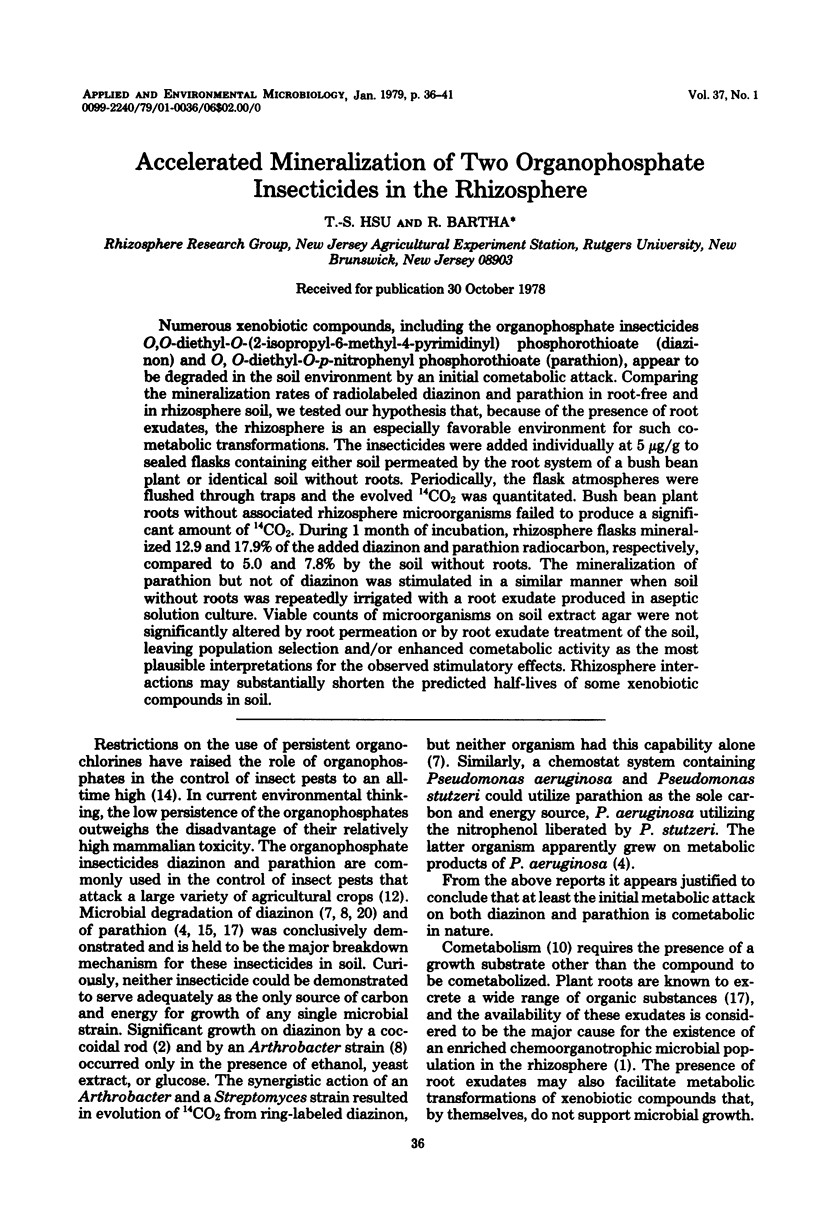
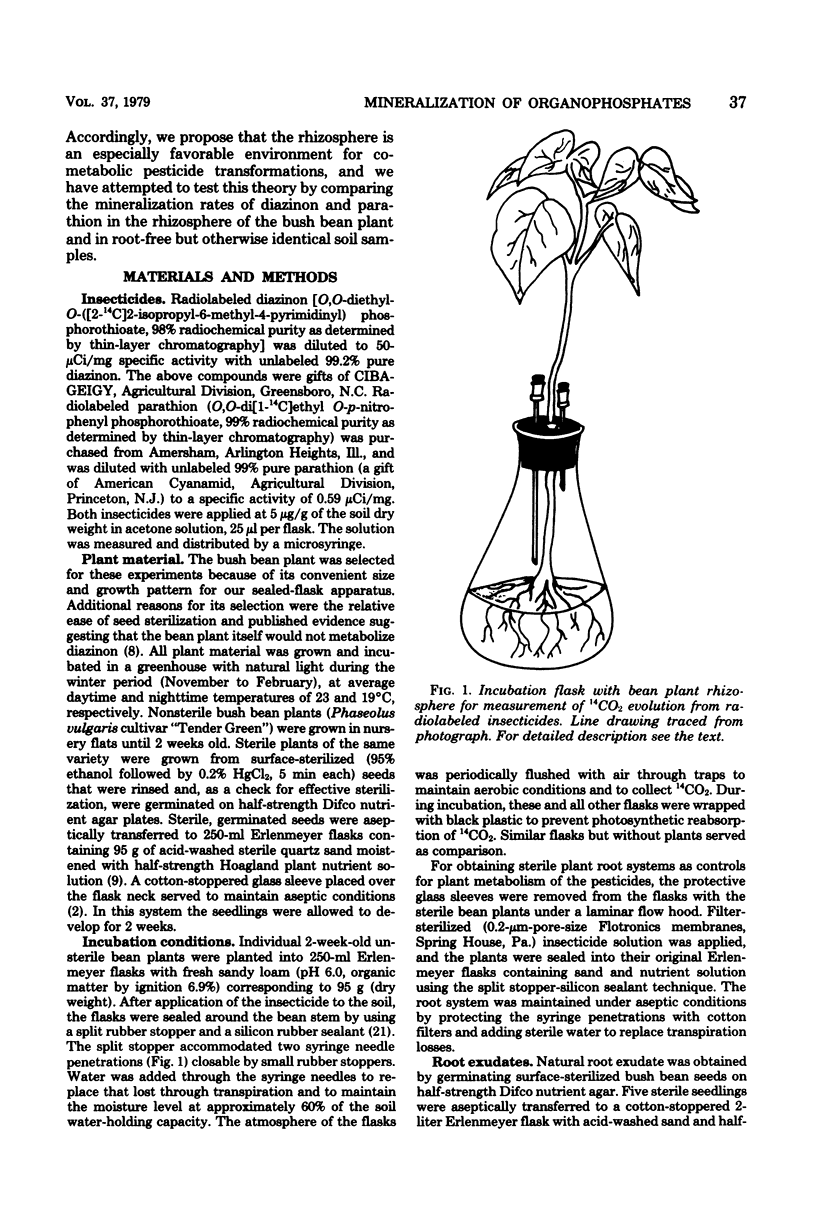
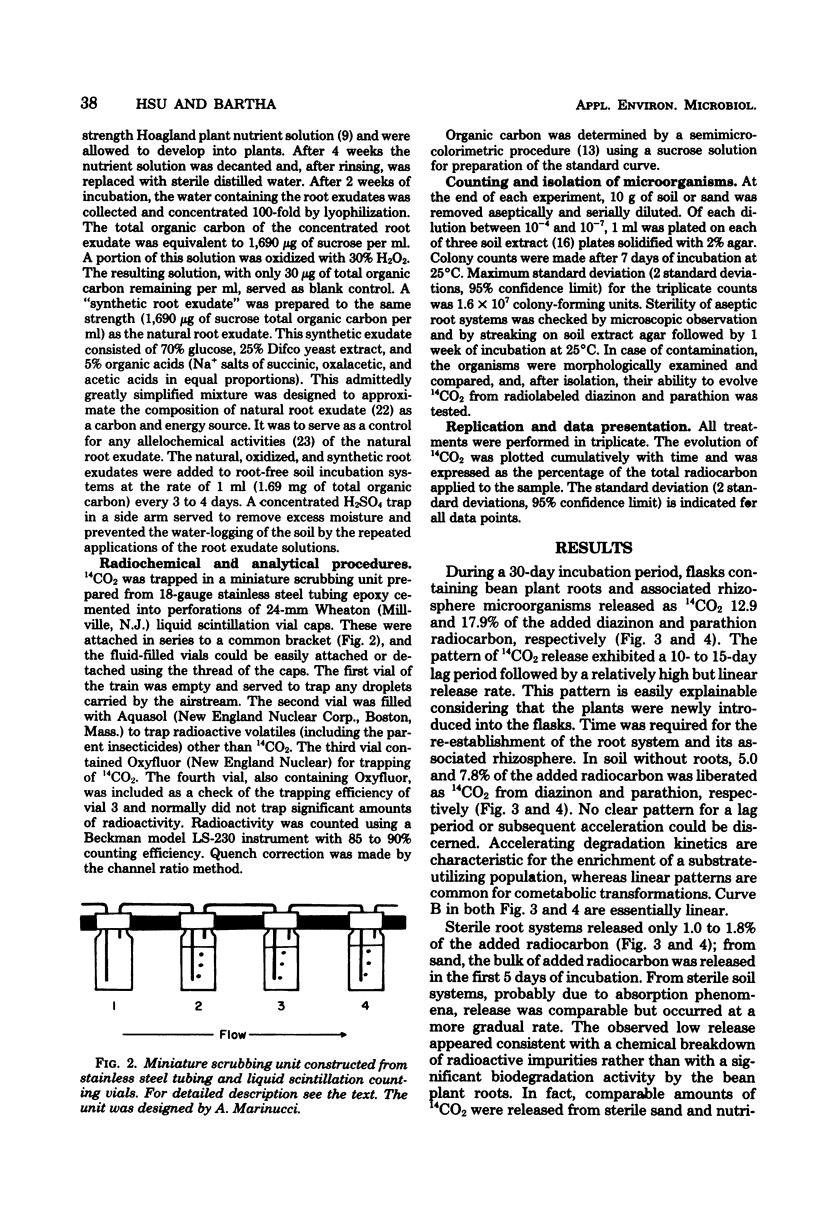
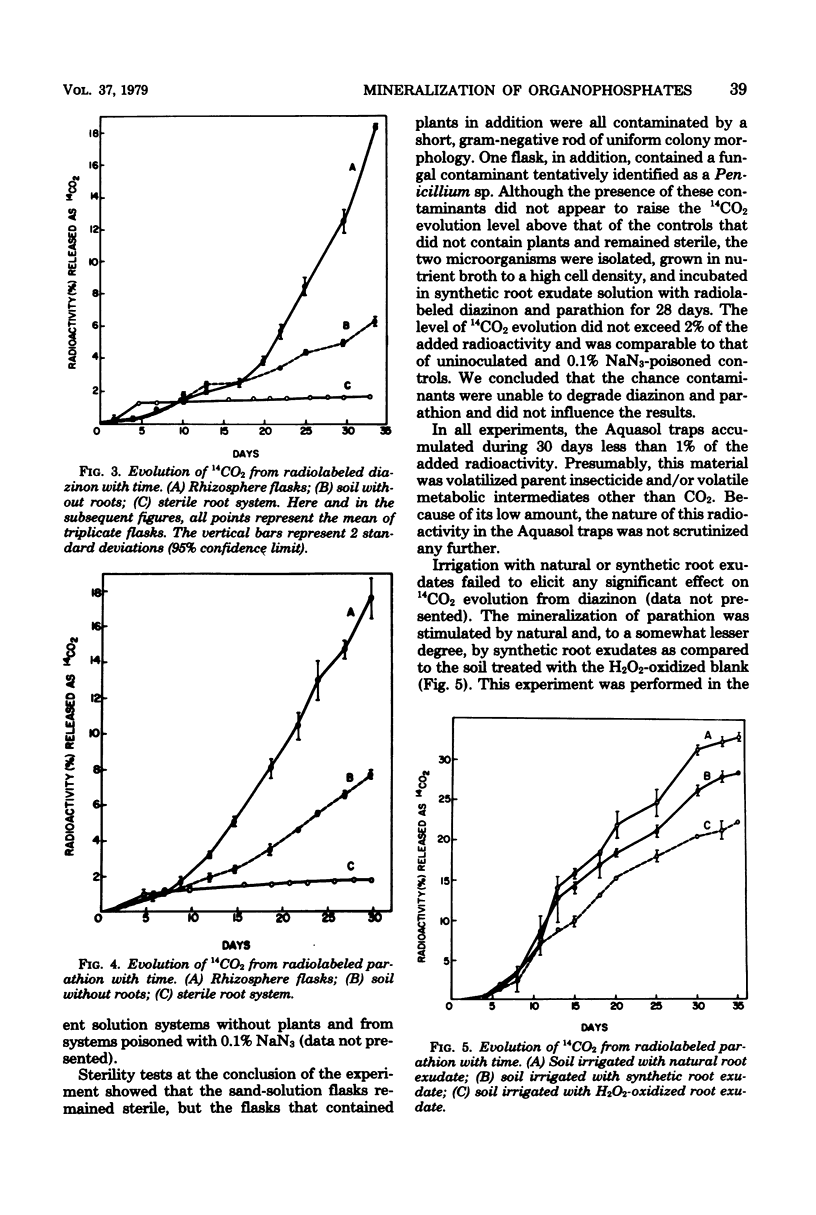
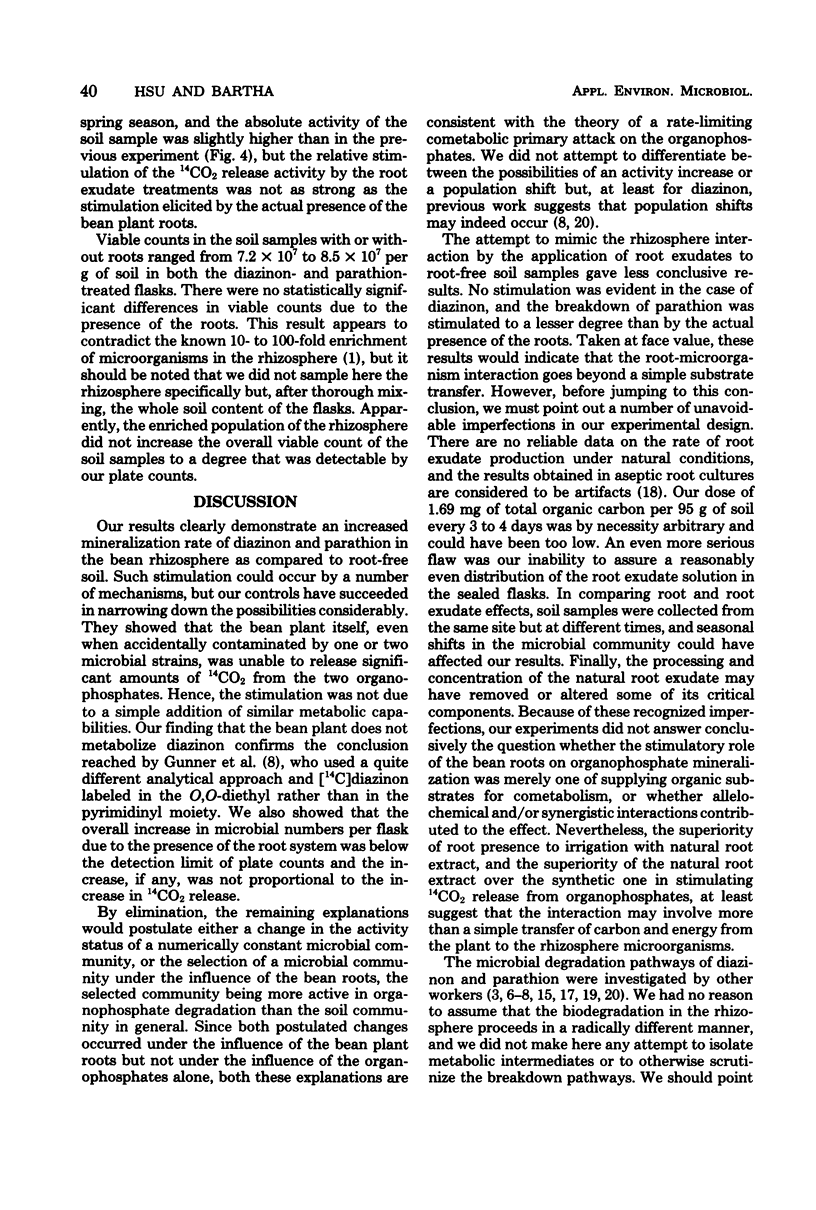
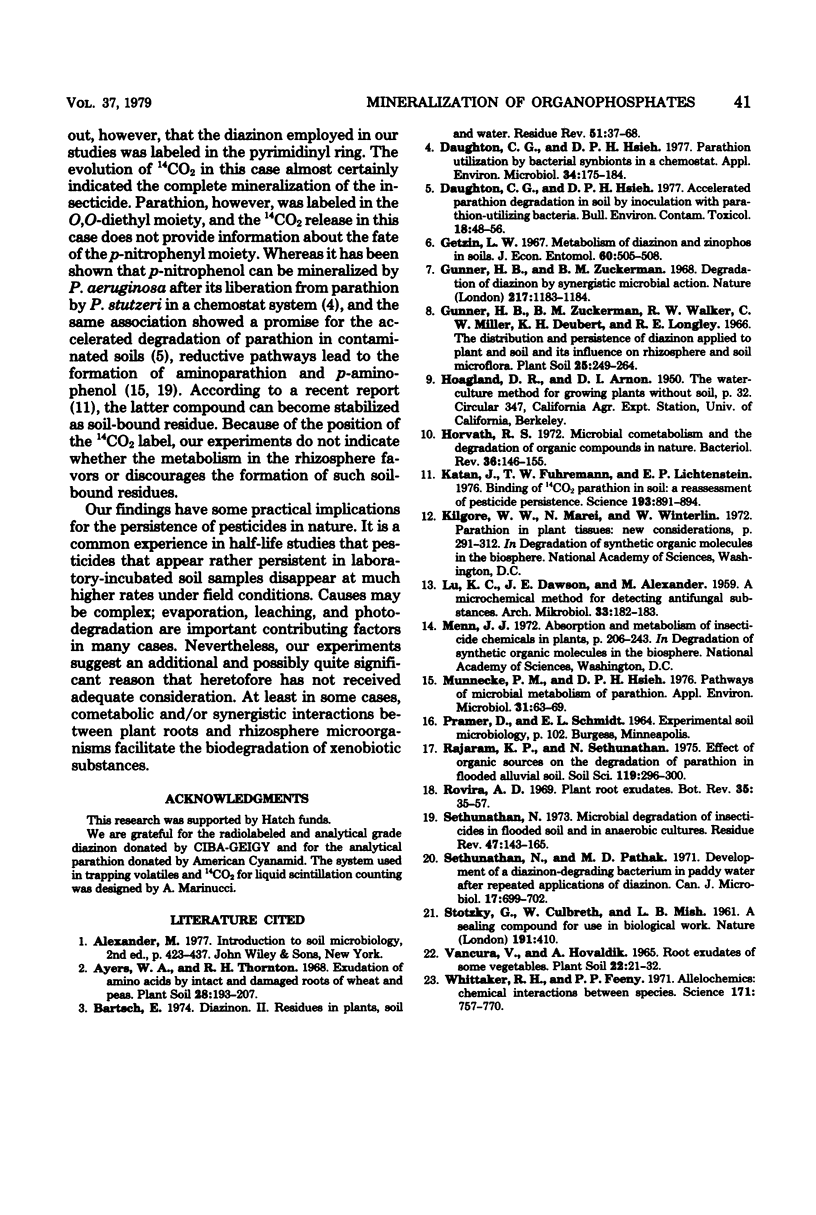
Selected References
These references are in PubMed. This may not be the complete list of references from this article.
- Daughton C. G., Hsieh D. P. Accelerated parathion degradation in soil by inoculation with parathion-utilizing bacteria. Bull Environ Contam Toxicol. 1977 Jul;18(1):48–56. doi: 10.1007/BF01686304. [DOI] [PubMed] [Google Scholar]
- Daughton C. G., Hsieh D. P. Parathion utilization by bacterial symbionts in a chemostat. Appl Environ Microbiol. 1977 Aug;34(2):175–184. doi: 10.1128/aem.34.2.175-184.1977. [DOI] [PMC free article] [PubMed] [Google Scholar]
- Gunner H. B., Zuckerman B. M. Degradation of 'Diazinon' by synergistic microbial action. Nature. 1968 Mar 23;217(5134):1183–1184. doi: 10.1038/2171183a0. [DOI] [PubMed] [Google Scholar]
- Horvath R. S. Microbial co-metabolism and the degradation of organic compounds in nature. Bacteriol Rev. 1972 Jun;36(2):146–155. doi: 10.1128/br.36.2.146-155.1972. [DOI] [PMC free article] [PubMed] [Google Scholar]
- Katan J., Fuhremann T. W., Lichtenstein E. P. Binding of (14C) parathion in soil: a reassessment of pesticide persistence. Science. 1976 Sep 3;193(4256):891–894. doi: 10.1126/science.948750. [DOI] [PubMed] [Google Scholar]
- Munnecke D. M., Hsieh D. P. Pathways of microbial metabolism of parathion. Appl Environ Microbiol. 1976 Jan;31(1):63–69. doi: 10.1128/aem.31.1.63-69.1976. [DOI] [PMC free article] [PubMed] [Google Scholar]
- Sethunathan N. Microbial degradation of insecticides in flooded soil and in anaerobic cultures. Residue Rev. 1973;47:143–165. doi: 10.1007/978-1-4615-8488-9_3. [DOI] [PubMed] [Google Scholar]
- Sethunathan N., Pathak M. D. Development of a diazinon-degrading bacterium in paddy water after repeated applications of diazinon. Can J Microbiol. 1971 May;17(5):699–702. doi: 10.1139/m71-112. [DOI] [PubMed] [Google Scholar]
- Whittaker R. H., Feeny P. P. Allelochemics: chemical interactions between species. Science. 1971 Feb 26;171(3973):757–770. doi: 10.1126/science.171.3973.757. [DOI] [PubMed] [Google Scholar]


